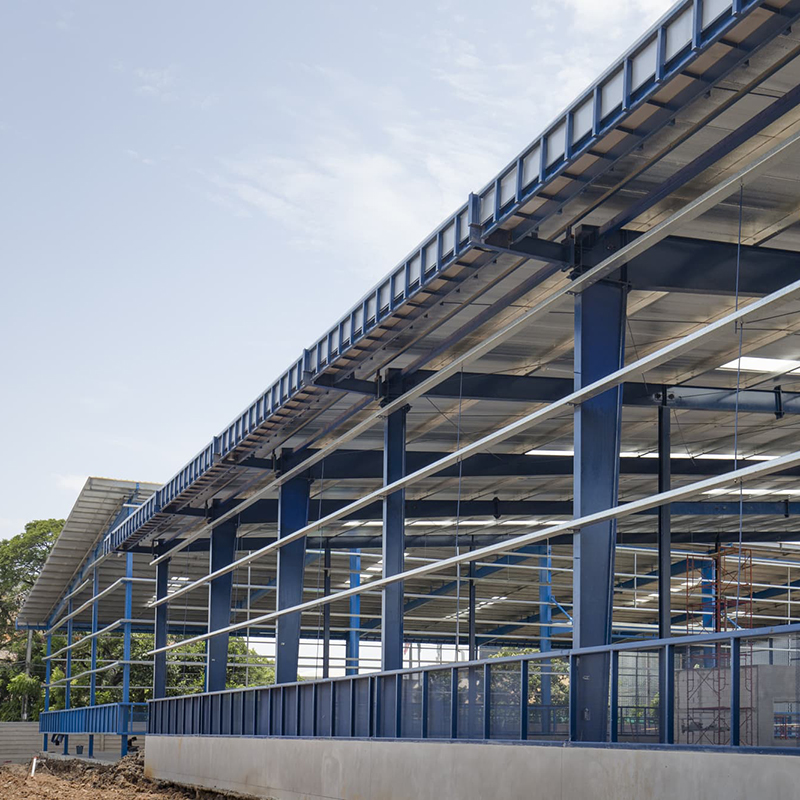1
strength
The ability of the member section material or connection to resist failure.Strength calculation is to prevent structural members or connections from being damaged due to material strength being exceeded
2
carrying capacity
The maximum internal force that the structure or component can bear without failure due to strength, stability or fatigue; the maximum internal force when the failure mechanism is formed by plastic analysis; or the internal force when the deformation suitable for continuous bearing is reached
3
Brittle fracture
Generally, it refers to the brittle fracture of steel structure without warning plastic deformation under tensile stress state
4
Strength standard value
Yield point (yield strength) or tensile strength of steel specified in national standards
5
Strength design value
The value of the standard value of steel or connection strength divided by the corresponding partial factor of resistance
6
First order elastic analysis
Without considering the influence of the second-order deformation on the internal force, the equilibrium condition is established according to the undeformed structure, and the internal force and displacement of the structure are analyzed according to the elastic stage
7
Second order elastic analysis
Considering the influence of the second-order deformation of the structure on the internal force, the equilibrium condition is established according to the structure after displacement, and the internal force and displacement of the structure are analyzed according to the elastic stage
8
buckling
Under the action of axial pressure, bending moment and shear force alone or jointly, the member or plate suddenly loses stability due to large deformation inconsistent with the original stress state
9
Web post buckling strength
After buckling, the web can still maintain the load-bearing capacity
10
General height thickness ratio
Parameter, which is equal to the square root of the quotient of the yield strength of the steel in bending, shear or compression divided by the corresponding web flexural, shear or local compressive elastic buckling stress
11
Overall stability
Evaluation of buckling or buckling of the whole structure or member under external load
12
Effective width
In the calculation of section strength and stability, the effective part width of the plate is assumed
13
Effective width coefficient
Ratio of effective width to actual width of plate
14
Calculation length
The geometric length of the member between its effective restraint points is multiplied by the coefficient considering the deformation of the rod end and the load condition, which is used to calculate the slenderness ratio of the member.The length of weld used in the calculation of weld joint strength
15
Slenderness ratio
Ratio of effective length of member to radius of rotation of member section
16
Equivalent slenderness ratio
In the calculation of the overall stability of axial compression members, according to the principle of equal critical force, the slenderness ratio of lattice members is converted to the corresponding slenderness ratio of solid web members, or the slenderness ratio of variable torsion and torsion instability to bending instability
17
Supporting force
In order to reduce the free length of the compression member (or the compression flange of the member), the lateral force required to be applied to the shear center of the section of the member (or the compression flange) in the buckling direction of the supported member (or the compression flange of the member)
18
Unbraced pure frame
A frame that resists lateral loads by the flexural capacity of members and connections
19
Strong braced frame
Among the braced frames, the bracing structures (such as supporting trusses, shear walls, elevator shafts, etc.) have high lateral stiffness, which can be regarded as a frame without lateral displacement
20
Weakly braced frame
In the ground braced frame, the lateral stiffness of the braced structure is weak, so the frame can not be regarded as the frame without lateral displacement
21
Rocking column
Columns with hinged ends in the frame can not resist lateral load
22
Surgical web node region
At the rigid joint of frame beam and column, the area of column web in the range of beam height
23
Spherical steel bearing
The steel ball surface which can rotate along any direction at the support can be used as hinged support or movable support for force transmission
24
Rubber bearing
Rubber and sheet steel, which meet the requirements of bearing displacement, are used as the bearing to transfer the bearing reaction force
25
executive director
In steel pipe structural members, the pipe fittings continuously connected at the joint, such as chord in truss
26
Branch pipe
In the steel pipe structure, the pipe fittings which are disconnected at the joint and connected with the main pipe, such as the web member connected with the main pipe in the truss
27
Gap node
A node where the toes of two branches are away from a certain distance
28
overlap joint
At the joint of steel pipe, two branch pipes overlap each other
29
Plane tubular joint
The node where the branch pipe and the main pipe are connected in the same plane
30
Space tube node
The pipe node formed by connecting branch pipe and main pipe in different plane
31
Composite components
A member consisting of more than one steel plate (or section steel) connected to each other, such as I-section or box section composite beam or column
32
Steel and concrete composite beam
The concrete wing plate and steel beam form a beam which can bear the whole force through the combination surface of shear connector
Post time: Jul-04-2020

